#national indigenous women's resource center
Text


PSSSSSST!!!!! Do you see these really cool bundles? All this awesome stuff? Buy buying either of these, you help the @wildwestzine not only reach it's next stretch goal, but you ALSO get to help the National Indigenous Women’s Resource Center, as all profits go to them!!
You can see previews of the amazing fanfiction and fanart that's been made through the zine's tumblr, instagram, and twitter.
And here are the stretch goals that all of your awesome people have helped us unlock so far:
Some super fun washitape
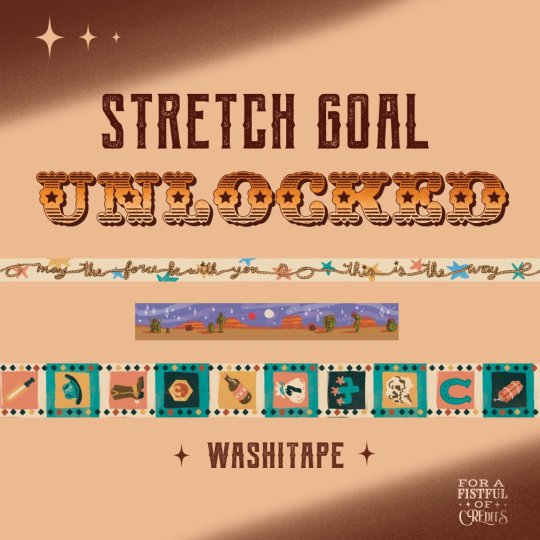
An amazing charm

And we are less than 50 orders away from unlocking a freaking awesome bandana!!!

AND!!!!!!!!!!! The next stretch goal after this is a custom deck of playing cards!!!! How awesome is that?!?!
Here's the catch, though: You have until
MIDNIGHT PST 11/20
to pre-order these or that bandana and deck of cards don't become a reality!!!
So please ORDER NOW!!!!
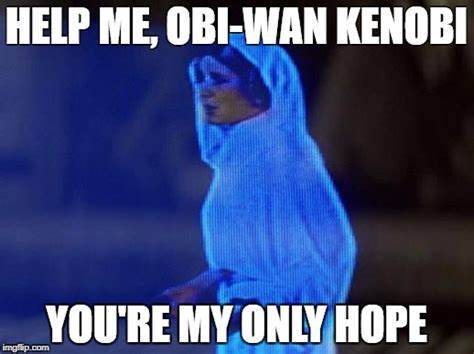
#WildWest_SWZine#wildwestzine#star wars#zine#western#cowboy#pre-order#charity#National Indigenous Women’s Resource Center#NIWRC#me#mine
5 notes
·
View notes
Text
The Supreme Court Is Going To Be "Reviewing" The Indian Child Welfare Act In October
Yep. They're literally going to try and overturn the ICWA during Indigenous History Month. This is where we're at.
The Indian Child Welfare Act is a federal law that was created to decrease the number of Native Alaskan and American Indian children being forcibly removed from their homes and communities only to be adopted into non-Native homes. This is an incredibly damaging experience that is a key component of colonialism. Additionally, many other tribal sovereignty laws were passed on the precedent of the ICWA.
This coming on the heels of Roe V Wade is incredibly distressing. The combination of forced birth and forced removal of children will hit Native communities incredibly hard.
Here is a page from the Native American Rights Fund that goes into more detail; their organization accepts donations and is one of the entities battling this challenge.
Here is a page from the National Indian Children Welfare Association containing a press release about the pending court case; NICWA trains Indigenous child welfare workers and uses education and resource distribution to create positive home environments for Indigenous children. They offer online trainings for a fee and here is a page of resources about ICWA
And here is a petition created by the Lakota People's Law Project Action Center, asking President Biden and the Department of Justice to use their authority on the ICWA's behalf; LPLP is an advocacy group that was founded in 2004 in direct response to violations of the ICWA in South Dakota. They also accept donations.
More generally, here's a link to the First Nations Development Institute. They are the number one Native non-profit in the US and are in top 3% most highly accredited charities rated by Charity Navigator. They do EVERYTHING: fighting for land stewardship, financial education for Native communities, and trying to repair food inequality.
And finally, here's the Indigenous Women Rising's Abortion Fund; it is open to Indigenous people of all genders and sexual orientation who are seeking abortion care.
839 notes
·
View notes
Text
FINAL DAY TO ORDER!

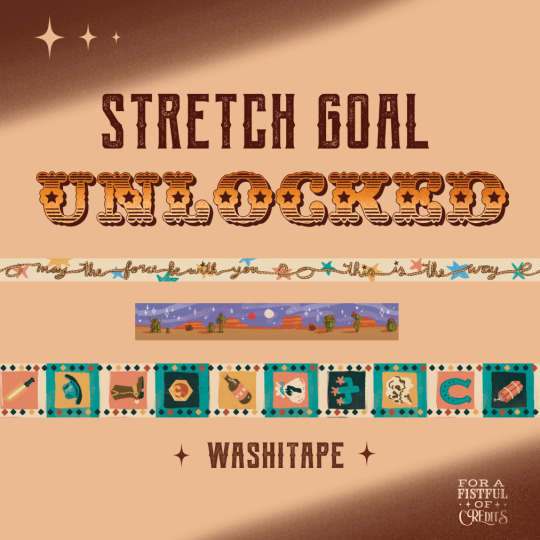
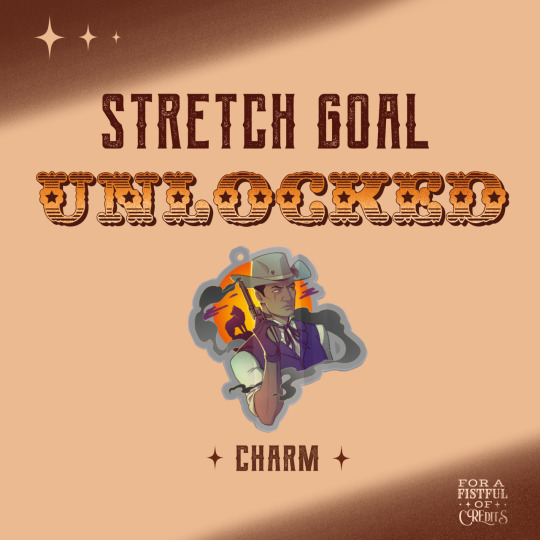
This is the LAST DAY to order your copy of the Star Wars Wild West zine, "For a Fistful of Credits"!
Purchases of Cowboy and Sheriff bundles include all unlocked stretch goal merch, like the brilliantly themed washi tape by @vividoodles and the howlingly hot Wolffe charm by @lornaka!
We are currently 64 orders away from the next stretch goal, a bandana with Din Djarin and Grogu!
All profits from this zine will be donated to the National Indigenous Women’s Resource Center.
#forafistfulofcreditszine#wild west au#fanzine#sw zine#charity zine#star wars fanfiction#star wars fanart
36 notes
·
View notes
Text
As we come to the end of March, Women's History Month, we're taking the chance to feature some women in Exandria! We're highlighting today some female characters who are not as often in the spotlight, and we present the following list of female non-player characters and guest player characters:
Lillith Daturai, illusionist wizard and cousin of Zahra Hydris. She also aided Vox Machina against the Briarwoods in Emon.
Calianna Mordsson, draconic sorcerer and escapee from the Cult of the Caustic Heart. She is also a friend of the Mighty Nein, with whom she traveled through the Labenda Swamp.
Nila, druid of the Guiatao Clan. She aided the Mighty Nein against the Iron Shepherds to free their captives, including her son and partner and Fjord, Jester, and Yasha.
Kotho, famed bounty hunter in the Menagerie Coast.
Doolan Tyversky, Archmage of Dysology of the Cerberus Assembly.
Olesya Lapidus, Marquis of Port Damali.
Lorkathar, firetamer of the Fire Ashari. She works to heal the Scar of the Cinder King and watch over the Flamereach Grove at the east outskirts of Emon.
Esmer Balenta, explosives maker and merchant in Bassuras.
Justi Pross, member of All-Minds-Burn in Bassuras and a friend of Ashton.
Dweomer, Aeormaton sorcerer working as an assistant to Laerryn in Avalir.
Honor Kinnabari, spellwright of the League of Miracles.
Most of all, we encourage you to support organizations working toward women's rights and the improvement of women's lives in the United States, such as the National Women's Law Center, National Black Women's Justice Institute, Center for Reproductive Rights, National Center for Lesbian Rights, National Indigenous Women's Resource Center, or another organization of your preference local to your area or in your country.
124 notes
·
View notes
Photo

It’s Native American Heritage Month! As we commemorate the cultures, traditions, histories, contributions, and achievements of the Native American communities, discover from the Coalition to Stop Violence Against Native Women (CSVANW), the Indian Law Resource Center, Indigenous Women Rising, the Native American Women’s Health Education Resource Center (NAWHERC), and the National Indigenous Women’s Resource Center (NIWRC) on how you can play a role in advancing the rights of Native American women!
📷 by Boston Public Library on Unsplash
#native american heritage month#indigenous women#indigenous#indigenous rights#indigenous peoples#indigenous people#indigenous lives matter#indigenous pride#indigenous culture#native#native women#natives#native pride#native culture#native american#native american women#native americans#native american culture#native american pride#ndn#american indian#land back
149 notes
·
View notes
Text
Moscow’s Aggression Against Ukraine And Indigenous Peoples Deeply Interconnected – OpEd

October 26, 2022
By Paul Goble
Russia’s acts of genocide against Ukraine arose from its “centuries-long oppression of the indigenous peoples” on its own territory, the native peoples of the Republic of Sakha say. And because these actions remain both unrecognized, they are not only continuing but “spilling over into neighboring countries.”
In a new collective letter released by the Sakha Pacific Association, these peoples describe how Russia has acted toward the indigenous peoples within its current borders and how these actions have both shaped and been affected by its imperialist approach to other peoples beyond those borders.
“Historically, Russia expanded its borders by subjugating territories that were the homelands to many indigenous people,” the letter begins. “Ethnic cleansing, forced relocation, assimilation, russification, cultural erasure, and resource exploitation all went hand in hand with the conquering of these regions.”
“This dark side of Russian history has never been widely discussed or acknowledged, particularly within the country, where the forced hierarchy of cultures and ethnicities has long been normalized, portrayed as natural and reproduced through cultural products.”
Instead, “the idea of “people’s friendship,” proclaimed by the Soviet Union, still influences many people’s opinions. It helped to spread the illusion of homogeneity. Images depict the titular nation, “Russians,” as the center of the narrative, surrounded by minorities” who are presented as “’wild and uncivilized’” and on their way to becoming Russians.
Not surprisingly, these tensions came to a head with Moscow’s declaration of mobilization for its war in Ukraine. “Most of the people drafted from remote areas were either misinformed about the war or had no idea that the draft was happening. Here, 4,883 km away from Moscow, 4,750 men were expected to be recruited.”
This number does not “follow principles of proportionality and the consistency regarding the list of those who were not to be mobilized according to the law.” Moreover, “among then are people over 55 years old, full-time students, people with disabilities, and others off-list who are taken away by this totalitarian system.”
Indeed, “according to the Constitution, it is illegal to draft small-numbered indigenous peoples of the North. Nonetheless, helicopters land in remote, small Arctic communities, gathering people who are uninformed of their rights and can barely speak Russian, to wage war against Ukraine.”
This use of helicopters was especially disturbing and infuriating because the authorities had no trouble sending helicopters to remote villages to seize men even though for years people in Sakha have had to wait for days or weeks or even longer to get a helicopter to take them for medical treatment.
The mobilization order came at the time of seasonal change, a critical period for northern communities. “As the first snow meets the ground, the following questions arise: how will children, the elderly, and women get through the winter in the extreme climate conditions with the absence of essential community members?”
On September 25, Yakut women “organized a peaceful demonstration – hundreds of daughters, sisters and mothers gathered to protest, shouting “No to war!”, “No to mobilization!”, “No to genocide!”. State propaganda attempted to portray it as a rally in favor of mobilization. But all video evidencs, however, show that is a misinterpretation of what actually happened.”
“The widespread international response to this action – mostly among people with no experience of living in a totalitarian country for decades – has been that Yakutians have just woken up and are only against mobilization, not against the war [but] it is important to highlight that the prevailing majority of those who have access to information in the Sakha Republic have never supported the war: simply because it is not our war” (stress supplied).
A week later, the people of Sakha tried to organized another protest, but it was suppressed by security forces brought in from outside the republic because in the view of Moscow “their local colleagues were not active enough” in reining in members of their own nations.
“Our rights are violated by the state we happen to be part of due to imperial gluttony. The illusion that a political regime is trying to immerse society in has no solid ground beneath it. Russia, the Soviet Union, and the Russian Empire have been continuously hostile towards the population of indigenous peoples residing within their territories” (stress supplied).
“The state has managed to take our names, eliminate our languages, exhaust our lands, and pollute our waters. Its long-running campaign involves the current ethnic cleansing as a well-planned move to eradicate indigenous peoples, many of whom no longer exist or have up until now survived in populations of fewer than ten.”
The time has come “for us to speak up and start these complicated conversations, both locally and globally. We must acknowledge the ethnocide of indigenous peoples of Russia as well as the never-ending exploitation of fragile ecosystems that leads to the intensification of global warming processes and has long-lasting effects on a planetary scale.”
“By means of this letter, we seek solidarity with the indigenous communities and their allies worldwide. We would like to ask you to help spread our story and share what is happening to indigenous peoples in Russia.”
#indigenous#indigenous russian#culture#indigenous russia#russia#important#colonization#fypシ#fypage#landback#Sakha#Altai#indigenous people#indigenous rights#No to war#no to genocide#siberia#Indigenous Siberian#Ukraine war#russia ukraine war
217 notes
·
View notes
Text
Charity Decision

The votes are in! The proceeds raised by the zine are going to be donated to the National Indigenous Women’s Resource Center. Find their mission statement below:
The National Indigenous Women’s Resource Center, Inc. (NIWRC) is a Native-led nonprofit organization dedicated to ending violence against Native women and children. The NIWRC provides national leadership in ending gender-based violence in tribal communities by lifting up the collective voices of grassroots advocates and offering culturally grounded resources, technical assistance and training, and policy development to strengthen tribal sovereignty.
We are so excited to be supporting this wonderful charity! Thanks to everyone who voted!
#forafistfulofcreditszine#star wars#cowboy au#wild west#cowboy clones#clone wars#fanzine#charity voting#charity
26 notes
·
View notes
Text
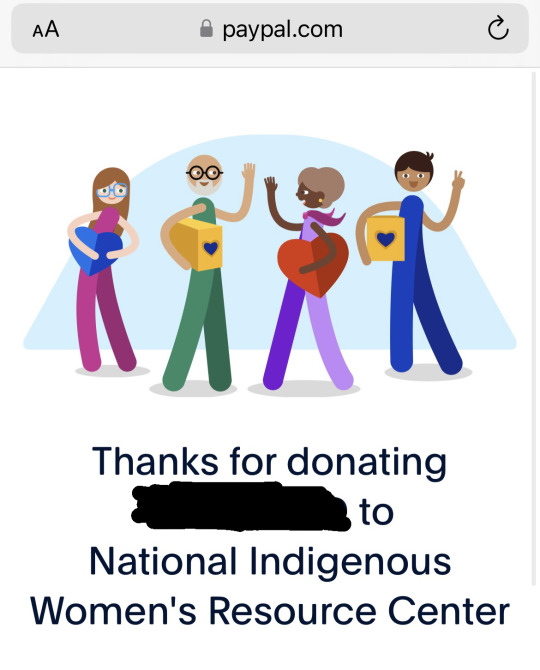
Considering the day, I hope you’ll join me in a donation to the National Indigenous Women's Resource Center which is working to end violence against indigenous women. 💜
10 notes
·
View notes
Text
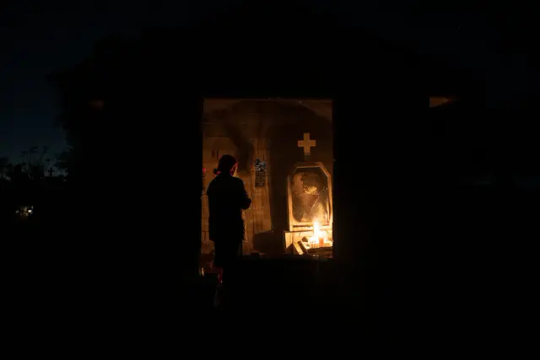
On the Texas Border, Folk Healers Bring Modern Touches to Their Ancient Practice
Known as curanderas, they carry on a tradition long revered in local Hispanic culture.
By Edgar Sandoval
Photographs by Verónica Gabriela Cárdenas
Edgar Sandoval grew up in Mexico and the Rio Grande Valley, where Verónica Gabriela Cárdenas lives and where both covered this story.
Dec. 16, 2023
On a recent day, Chriselda Hernandez heard a knock at her door in the Texas border town of Edinburg. It was a college student who said she was suffering from a string of bad luck. A drunken driver had crashed into her car. Then someone broke into the new car she was driving and stole her laptop. “I need a limpia,” she pleaded — a spiritual cleanse.
Ms. Hernandez moved to an altar in her living room that bore an image of the Virgin of Guadalupe. Slowly, she mixed a concoction of sage and palo santo, a wood native to South America, and lit it with a match. Then she turned back to the young woman and waved the healing smoke over her body.
“You are holding on to something,” Ms. Hernandez whispered to her. “Let it go. There is no shame.”
For generations, Hispanic communities along the Southern border have turned to curanderas, or folk healers, like Ms. Hernandez, often seen in the popular imagination as old women with candles and religious icons operating in the shadows of society out of rusty shacks.
But the ancient healing art has entered the age of Instagram. More and more younger people are taking on rituals they learned from their grandmothers and deploying them against 21st century problems. They conduct limpias on public beaches, trade recipes online for blocking “envy energies” and sell artisan candles bearing the image of Our Lady of Guadalupe in shops. Their clients are often college-educated, like Clarissa Ochoa, the young woman who went to Ms. Hernandez for help.
“I think it’s an honor to be a curandera; it is something very beautiful, but also very limiting,” said Ms. Hernandez, 42. “I feel like we are breaking those boundaries, that curanderas are just herbs and little old ladies. My calling is just to heal whoever I can.”
A culture of folk healing preceded the arrival of Spaniard conquistadors to Latin America and Mexico. Over time, curanderos, a term used for healers of both genders, began mixing Indigenous rituals with elements of Catholicism and influences from Asian and African folk traditions along the way.
The practice has taken hold in Texas’ Rio Grande Valley, located a stone’s throw from the Mexican border, in large part out of necessity. Hidalgo County, home to McAllen and a majority Hispanic population, has one of the highest rates in the nation of people without health insurance, and many people rely on curanderas for lack of other affordable options, said Servando Z. Hinojosa, a professor of anthropology who teaches a class on Mexican-American folk medicine at the University of Texas Rio Grande Valley.
Mr. Hinojosa said many Hispanic residents also tend to be mistrustful of the medical establishment. This is especially true when it comes to mental health. A recent study by the Centers for Disease Control and Prevention found that while the number of Black, Asian and white people who have sought mental health care treatments has climbed in recent years, there has been very little movement among Latinos.
“There’s an element of distrust, but there is also structural alienation,” Mr. Hinojosa said. “They are a population that will seek affordable resources, and they will go to where the products are and where the advice is to be found.”
In the past, the medical establishment has warned people not to rely on folk remedies for physical ailments, some of which can be harmful. Many Latino children have fallen ill and even died after consuming such remedies known as albayalde, azarcon and rueda, powders often used for stomach-related illnesses that have been found to contain lead.
Curanderismo has become so accepted in the Rio Grande Valley that it is not unusual to see street signs and TV ads advertising folk healing services.
Ms. Hernandez said her great-grandmothers had both been parteras, or midwives. When she was a little girl, she said, she discovered that she possessed her own set of gifts; as she grew older, she said, she began interacting with an entity she believes to be the Angel of Death, Azrael. She works at a cellphone call center and lives with a girlfriend in a modern house in the suburbs of Edinburg, a city close to the border.
“You make it your own. There is no right or wrong. You do what’s right for you,” Ms. Hernandez said.
Another modern folk healer, Danielle López, 39, a former student of Mr. Hinojosa who said she also learned she had a don, a gift, as a young girl, has embraced the moniker of millennial curandera. She has combined the old traditions she learned from the grandmother who raised her, Consuelo López, and an aunt, Esperanza Rodriguez, with new skills learned at institutions of higher education.
Her academic record includes a master of arts in interdisciplinary studies with a concentration in Mexican-American literature, medical anthropology and Latin art history at the University of Texas Rio Grande Valley. She is completing a doctorate in English with a focus on borderlands literature at the University of Texas at San Antonio, where she is also a lecturer.
“For me it’s a continuity,” she said of her spiritual work. “I feel like we need it more now.”
It is not unusual for people to ask her for trabajitos, little jobs, including blessings, limpias and home remedies, when she is not buried in books. Not long ago, Ms. López got a request to bless a new business for a friend. When Ms. López cleansed the establishment with a bouquet of roses, six petals fell, prompting her to warn her friend that six people “did not have good intent.”
“They may say they are happy about her new business, but they are not.”
She also sometimes offers more science-based advice. When people tell her that they are feeling anxious or cannot sleep, she recommends that they cut their intake of sugar or caffeine. Because the advice comes from a curandera, she said, people tend to trust that she has their best interests at heart.
The concept of a curandera is so pervasive in Latino enclaves that in September the Texas Diabetes Institute, a state-of-the-art facility operated by University Health on San Antonio’s west side, a historical Mexican-American neighborhood, brought back to its lobby a sprawling wall-size painting, “La Curandera,” by the Chicano painter Jesus Treviño, who died early this year. The painting had been removed for restoration.
Still, when it comes to luck and matters of the heart, many people avoid professional help and turn to curanderas, because there is no substitute, said Sasha García, 39, a curandera who is known for her fire-red hair.
In northern Mexico, where Indigenous culture is not as widespread and the Catholic Church’s hold is stronger, Ms. García said, her ancestors often operated in the shadows to avoid the stigma associated with folk healers. By contrast, on the American side of the border, she not only feels freer to practice openly, but some Catholic priests stop by for her counsel, she said.
Ms. García welcomes clients at La Casa de la Santísima Yerberia in the city of Pharr, near McAllen, next to two imposing statues of La Santísima Muerte, skeletons each wearing red and black robes. Ms. García reminds people that while the image of La Santísima, a Latina version of the Grim Reaper, may evoke frightening emotions, death is to be revered.
“If you pray to her properly, she can heal and deliver love, freedom and wealth,” she said. “I only ask her for positive things.” (She laments that criminal elements along the border and in Mexico have appropriated the image.)
On a recent afternoon, Jocelyn Acevedo, 27, a frequent client of hers who runs a credit repair service, arrived for her monthly limpia. She had heard about Ms. García four years ago and after the first limpia, she said, she saw her business begin to boom. She was so convinced by the session that she since has regularly driven 60 miles from nearby Starr County, near the Rio Grande, for her sessions. She now has a tattoo of La Santísima.
Ms. García instructed Ms. Acevedo to rub three coconuts all over her body. Ms. García then broke them on the ground to release what she said was the negative energy her client had been carrying.
“Did it work? Of course,” Ms. Acevedo said.
Ms. García has embraced touches of modernity along with the old customs, including consultations now offered over FaceTime. Her clients have responded with their own offerings from popular culture, including a sign one brought in that now hangs on the front door: “Witch Parking Only.”
“No one listens,” Ms. García said with a smile. “The word may be becoming more modern, but we curanderas are still here. Just don’t park in my spot.”
Edgar Sandoval covers Texas for The Times, with a focus on the Latino community and the border with Mexico. He is based in San Antonio. More about Edgar Sandoval
10 notes
·
View notes
Text
Organizations To Help Indigenous People
I've been reblogging three separate posts for a while now and I thought I'd combine them all into one for maximum ease. Please reblog this list and help these organizations if you can!
Warrior Women Project
Sitting Bull College
First Nations COVID-19 Response Fund
The Redhawk Native American Art Council
Partnership With Native Americans
Native American Heritage Association
National Indigenous Women's Resource Center
Indigenous Women Rising (abortion access fund)
Indian Residential School Survivor’s Society
Stop Line 3
Honor The Earth
The Lakota People’s Law Project
Amazon Frontlines
‘Āina Momona
The Native Wellness Institute
The Native Americans Rights Fund
National Centre for Truth and Reconciliation/University of Manitoba
First Nations Child & Family Caring Society
Native Women's Association of Canada
Indspire
Mi'kmaw Native Friendship Centre
Micmac Benevolent Society
Mawita'mk
Advancing Indigenous People In STEM
Community Outreach and Patient Empowerment
The Association on American Indian Affairs
First Nations Development Institute
American Indian College Fund
Diné Citizens Against Ruining Our Environment (CARE)
Hopa Mountain
Indigenous Values Initiative
Native American Disability Law Center
People’s Partner for Community Development
If anyone has links to other organizations that help indigenous people, please feel free to add them!
#indigenous people#native americans#native canadians#indigenous organizations#support indigenous people#support native people#signal boost#for a good cause#please reblog#please help#please share#please donate
30 notes
·
View notes
Text


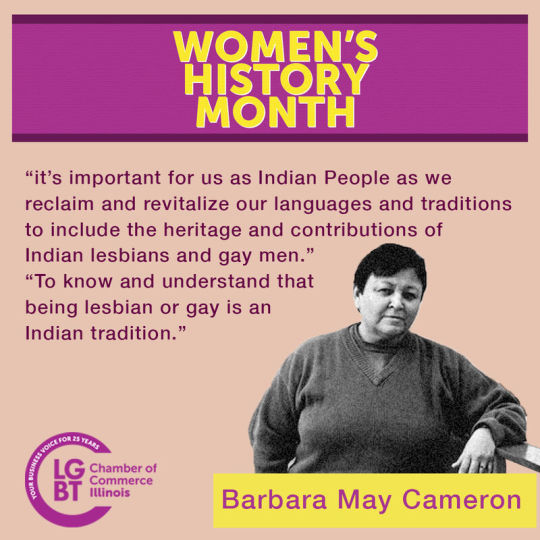
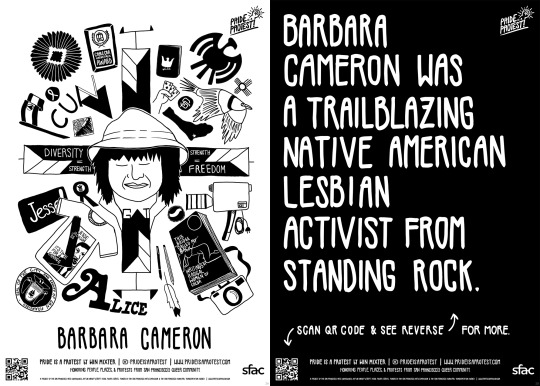
Barbara May Cameron's 69th Birthday May 22, 2023
Barbara May Cameron (May 22, 1954 – February 12, 2002) was a Native American photographer, poet, writer, and human rights activist in the fields of lesbian/gay rights, women's rights, and Native American rights.
Today’s Doodle celebrates Barbara May Cameron, a Native American photographer, poet, writer, and human rights activist. The Doodle artwork is illustrated by queer Mexican and Chitimachan artist Sienna Gonzales. On this day in 1954, Barbara Cameron was born in Fort Yates, North Dakota.
Cameron was born a member of the Hunkpapa group, one of the seven council fires of the Lakota tribe, and raised on the Standing Rock Reservation by her grandparents. After graduating high school, she studied photography and film at the American Indian Art Institute in Santa Fe, New Mexico. It was here that Cameron began winning awards in theater and media arts.
After coming out as a lesbian, Cameron moved to San Francisco in 1973 and advocated for LGBTQIA+ acceptance in the Native American community and addressed racism in queer spaces. In 1975, she co-founded Gay American Indians — the first ever dedicated Native American LGBTQIA+ group — with her friend and fellow activist Randy Burns.
Cameron took part in various programs to promote human welfare. From 1980 through 1985, she organized the Lesbian Gay Freedom Day Parade and Celebration. She also co-led a lawsuit against the Immigration & Naturalization Service which had a policy of turning away gay people. The case went before the Supreme Court and ruled in favor of Barbara and her co-plaintiffs who made persuasive arguments for change.
A few years later, she became an executive director at Community United Against Violence, where she supported people affected by hate crimes and domestic violence. The San Francisco Mayor appointed Cameron to both the Citizens Committee on Community Development and the San Francisco Human Rights Commission in 1988, and the next mayor appointed her to the United Nations Commission on the Status of Women.
HIV/AIDS disproportionately impacted Native people in the early 1990s, so Cameron stepped up to lead the charge. She was active within the San Francisco AIDS Foundation, the American Indian AIDS Institute, and served as a consultant to the U.S. Department of Health and Human Services and the Centers for Disease Control, helping with AIDS and childhood immunization programs.
Cameron is remembered for her passionate writing and speeches, many of which are housed at the San Francisco Public Library. Her words live on through her essay, No Apologies: A Lakota Lesbian Perspective which is featured in Our Right To Love: A Lesbian Resource Book.
Happy birthday Barbara May Cameron, thank you for working tirelessly to improve human rights and for giving queer Indigenous people a place to feel safe and belong.
Native American Standing Rock Sioux Tribe
Barbara May Cameron was a Hunkpapa Lakota from the Fort Yates band of the Standing Rock Sioux Tribe in Fort Yates, North Dakota. She grew up on the Standing Rock Indian Reservation, North Dakota, raised by her grandparents. Completing her early education and high schooling on the reservation, she went on to further her education in photography and film at the Institute of American Indian Arts in Santa Fe, New Mexico. In 1973 Cameron moved to San Francisco to attend the San Francisco Art Institute.
30 notes
·
View notes
Note
Hi, again — thank you for putting my questions out, I appreciate folks engaging on the colonization posts. It’s dangerous, especially right now.
I recall Poppy claiming that Zena was Indigenous in discussions on racialized topic, but unfortunately I can’t find a link. I know the context tied to something around racial issues (landback? prof flowers?). I usually don’t look further into those claims from white ppl when they use inidgeneity claims while getting called out for a racist comments or perspective. It’s a nuanced issue between Black & Native communities & ppl mess up sometimes. These moments are times to learn, not deny & get shitty. It’s also a common tactic used by white folks — being Native doesn’t mean you can’t say anti-black shit or be anti-black.
Anyway, I am very active in organizing on MMIR/MMIW. On the ground, in communities. I have multiple missing/murdered relatives. Northern border towns are dangerous near my home. I disclose this because the following context drew First Nation/Native attention.
I suspect the Indigenous claim ties came up while folks engaged Native issues in tense racial discussions. However, aside from the claims, many of us have seen Poppy use the movements centered around our missing & murdered relatives to lash out at Black women during the say her name situation. She did not engage a public dialogue with organizers. She spoke for us and in a harmful way. I understand the pushback for say her name. But pulling Natives into this as if Black women STOLE from us is actually harmful. It also indicates, a lack of connection with our communities & people. Over simplified arguments on landback are just as harmful. The US has always wanted our land & resources — they STILL target our jurisdictions. They are still focused on taking our homelands. Nonnative don’t see it because they were socialized not to see it. These streamer are influencing white youth that will have power to impact our ppl. The US education socializes citizens. Untangling yourselves from that socialization is KEY in movement building & Indigenous/Black conceptual frameworks are powerful. They will sharpen any anti-colonial movement. They are imperative in order for movements to NOT become refined versions of settler colonialism. This shit is real. Obviously Indigenous erasure (genocide) directly resulted in nonnative ignorance on our tribes & movements. It is pretty extreme even in queer contexts & for us, kinda horrifying. These are not rhetorical issues — they have impacts that many nonblack & nonnative folks won’t see unless pointed out. And even then, it takes time to flesh them out. It is truly laborious & triggering as fuck. It also derails our work.
We have murderer and missing Afro-Native relatives and that hashtag HELPED with visiblizing Black/Native intersections of racialized murder & trafficking. As if there aren’t Black Native families/people. It is dehumanizing. We are not props in your arguments against Black Americans. The hashtags assisted in furthering deep discussions between our communities on US/ Canadian anti-black/anti-indigenous issues rooted in US /Canadian settler colonialism/capital colonialism/white supremacy.
There is a very common thing settlers do when they’re called out on racial issues — they use Native ppl/identity as props in their arguments to bolster their arguments when called out for antiblackness. Everyone in this country is socialized to be antiblack and anti-indigenous. Even Native ppl and black ppl! It’s not personal, it’s systemic. We are people tho and we see white streamers like Poppy. Streamers who should be our allies. Often we won’t engage because…well, emotional economics & cost/benefit analytics. There is a very long history of settlers and the US settler nation-state using Black/Native struggles in ways to create antagonisms. It happens interpersonally, as seen with Poppy’s argument. And it happens in policy. The systemic roots of antagonisms between Native ppl & Black ppl stem back far (chattel slavery —5-tribes/genocide—buffalo soldiers hunting/killing Natives). Our communities have direct relatives from these times, they not just called ancestors, they are our precious relatives — it wasn’t that long ago (example: my mom was raised by my great-grandmother who was born in 1870, my grandmother died at 107).
It’s all become a mentality woven into the fabric of US society and settler mentalities poison social movements.
Anyway, I’ll ask the other person who brought it to my attention. Maybe they’ll remember. Sorry for typos. It’s a lot to comment on.
.
#I'm white as milk so I'll let the anons comment speak for itself#poppy#poppy and zena#zena and poppy#poppy diabolique#ladydiabolique#poppy & zena#zenaandpoppyonyoutube#zena
6 notes
·
View notes
Text
Kellids Info
Kellids are the indigenous people of Avistan with deep history in North and South of the continent until they were driven up north by the Taldor Empire, which were largely made up by the descendants of Azlant. There are four broad cultural groups: the Isgeri who hold onto their cultural practices despite being absorbed by Taldans. The Palakari who some consider the most cosmopolitan of the Kellids and often identity as Taldan. Yuktiri are the 'embodiment of Kellid culture' to outsiders and from the Realm of the Mammoth Lords (Amiri and Amang the Twice Born are Yuktiri). The Sakoris were akin to the Yukiri in having their own lands, but had more industry and permanent settlements.
One of which was Threshold, a prison for Arcane users, but I’ll get back to that.
At present Kellids have a unified language and dense oral history but no written history, living in lands where agriculture is difficult to cultivate, and few Southern-style cultural centers. Due to a lack of written culture and a place for it to flourish, Kellid people in Sakoris and the Realm of the Mammoth Lords have no Arcane culture as like those who drove them out of the southern part of the continent. The closest they have are witches, which is a very complicated subject for the Yukiri and Sakoris.
Most Kellids distrusted the Irrisen Witches, a monarchy following the directives of Baba Yaga who have enslaved people and has her daughters or granddaughter control the nation every 100 years. (Yes, dudes wrote this particular bit of Pathfinder Lore). Forces of ice trolls and cold fey threatened the Mammoth Lords and Sakoris in the east of Sakoris throughout their history until the recent decades Post Worldwound where they established a truce.
However, there were many witches among the Kellids and including the Sakoris that served as Tribal Witches. Some were good, some were not, and unlike the witches in Irrisen, both men and women could be witches and have patrons that were fey, infernal, celestial, or abyssal. While Sakorians would throw wizards or witches of evil partons into Threshold to have their work overseen by Druids and Shamans, many tribal witches of of the Sakoris were respected, notably in the South-East of the kingdom. During the fall of Sarkoris, many witches fought alongside with their tribes, shamans, and people to the bitter end.
Essentially, the Kellid/Sarkoris distrust of magic results from not having the same resources as those in south Avistan, and while they lashed out harshly at wizards, they were far more nuanced in dealing with non-Irrisen Witches.
24 notes
·
View notes
Text
The American Civil Liberties Union, ACLU of Northern California, Center for Gender & Refugee Studies, and National Immigrant Justice Center filed a legal challenge today to the Biden administration’s new asylum ban.
The challenge was filed swiftly after the new policy’s unveiling. The ban largely mimics two Trump-era policies — known as the “entry” and “transit” bans — which were blocked by the courts. It prohibits asylum for everyone at the border who transited through another country en route to the United States (i.e., people from countries other than Mexico) except for those who are able to obtain a scarce appointment to present themselves at a border port through a flawed mobile application; the rare person who first sought and was denied asylum in another country; or those who can prove that they qualify for one of a few other extremely narrow exceptions.
“The Biden administration’s new ban places vulnerable asylum seekers in grave danger and violates U.S. asylum laws. We’ve been down this road before with Trump,” said Katrina Eiland, managing attorney with the ACLU Immigrants’ Rights Project. “The asylum bans were cruel and illegal then, and nothing has changed now.”
The filing argues that asylum laws do not allow the administration to restrict access to asylum based on an individual’s manner of entry or whether they applied for asylum elsewhere. It further explains that migrants cannot meaningfully seek asylum in transit countries because many lack a functioning asylum system, others have systems that are stretched to the breaking point, and most are not remotely safe for asylum seekers to find refuge. U.S. courts have recognized these principles in rejecting the previous asylum bans that the new rule tries to combine and re-impose.
“People fleeing persecution have a legal right to seek asylum, no matter how they reach the border,” said Melissa Crow, director of litigation at the Center for Gender & Refugee Studies (CGRS). “Our asylum system was designed to protect people fleeing imminent threats to their lives, who do not have the luxury of waiting for an elusive appointment or for an application to be adjudicated in a country where they are in danger. The Biden administration has had over two years to set up a fair and humane asylum process post-Title 42. That it has instead chosen to resurrect and repackage illegal Trump-era policies is reprehensible.”
The case also cites numerous issues with requiring people to use the flawed CBP One mobile app to secure an appointment to seek asylum, including lack of financial resources to acquire a smartphone, lack of adequate internet access to use the app, technical glitches, language and literacy barriers, and an insufficient number of available appointments. These multiple, compounding barriers to CBP One access will leave many asylum seekers stranded indefinitely in dangerous and life-threatening conditions in Mexico.
“This unlawful rule relies on a mobile app that functions poorly, is available in just three languages, and requires people to enter a lottery for a woefully insufficient number of appointments,” said Keren Zwick, director of litigation at the National Immigrant Justice Center. “Even more egregious, the rule perpetuates false notions that people fleeing persecution are safe in Mexico and Central America, and it offers purported solutions that will be routinely unavailable, especially to migrants who are not from the Western Hemisphere. In doing so, the rule levies special harm on some of the most vulnerable migrants, including women, LGBTQ people, and Black and Indigenous people.”
The challenge to the ban was filed in the U.S. District Court for the Northern District of California on behalf of the East Bay Sanctuary Covenant, American Gateways. Central American Resource Center, Immigrant Defenders Law Center, National Center for Lesbian Rights, and the Tahirih Justice Center.
10 notes
·
View notes
Text
National Day of Awareness for Missing and Murdered Indigenous Women and Girls and Two-Spirit People
May 5th was the day,
A blog post at Sicangu Community Development Corporation explains the purpose:
Maybe you’ve seen the hashtag #MMIW on social media, or its counterpart, #MMIWG2. Both stand for Missing and Murdered Indigenous women, the latter adding on G2 for Girls and Two-Spirits. The hashtag was created to spread awareness for a generations-long silent epidemic that has stolen the lives of Indigenous Women, Girls and Two-Spirits across Turtle Island (North America).
The National Indigenous Women's Resource Center has more important information. I was very moved by Pauktuutit Inuit Women of Canada has unveiling The Red Amautiit Project.
I suspect for a lot of White people, I'm "too woke." But most of the time I'm rather chagrined by how unaware I am, and in particular how I turn away from difficult realities. On May 5th, I couldn't think of any useful way to raise awareness of the issue of missing and murdered indigenous women.
Today, E. Jean Carroll won a judgment against Donald Trump. Carroll throughout the whole process has stated the the me too movement inspired her to come forward. That’s made me think again about “awareness.”
Back when the hashtag #MeToo was being posted everywhere, I noticed a male friend had posted #MeToo. I thought at the time something like: It's not for you. There are many particulars about sexual violence that are very important. But in in a general sense facing the reality of sexual violence is the critical thing for everybody. And by facing it to become open to healing action.
14 notes
·
View notes
Text
The trans cult just have to give themselves another day. And to have this just two days after May 5th which is National Day of Awareness for Missing and Murdered Indigenous Women and Girls is just extra disgusting.
ASBURY PARK, N.J. -- Asbury Park has declared May 7 "Drag Queen Visibility Day."
The proclamation comes after several pieces of anti-drag and anti-trans legislation were proposed across the country.
A day-long festival will be held on May 7 highlighting drag performers.
The proclamation will also be recognized by the governor's office.
May 5 is commemorated as National Day of Awareness for Missing and Murdered Indigenous Women and Girls. The day became recognized in 2017 when Montana Senators Steve Daines and Jon Tester responded to the murder of Hanna Harris on the Northern Cheyenne Reservation, as well as the cumulation of other murders and abductions of Native women and girls. Since then, grassroots efforts at local, regional, national, and international levels have grown as Indigenous families, advocates, and Indigenous nations continue to call attention to the violence and galvanize action in response to the MMIWG crisis.
We encourage you to join community actions this week to raise awareness and call on governments to be accountable to the injustices and systemic barriers embedded in federal and local legislation that perpetuate this crisis. As Hanna Harris’s mother, Malinda Limberhand, aptly said: “As a mother, nothing will replace the loss of my daughter, but by organizing to support the National Day of Awareness and creating the changes needed, I know it will help others. And Hanna and so many others will not be forgotten.”
7 Actions to Take for National Day of Awareness for #MMIWG
1. Wear red, take a photo, and share it on social media to bring awareness of #MMIWG.
Share a photo. Make sure to use hashtags #MMIW, #MMIWG, #MMIWG2S, #MMIWActionNow, and #NoMoreStolenSisters!
2. Join the National Indigenous Women's Resource Center in these 3 calls to action:
Urge your Senators to pass Family Violence Prevention & Services (#FVPSA) reauthorization with key Tribal provisions: n8ve.net/Ts6M5
Tag The Justice Department, Secretary of the Interior Deb Haaland, and the US Interior on social media and demand they immediately implement the Not Invisible Act
Tag the Justice Department and the FBI on social media and demand they improve MMIW data collection under Savanna’s Act . #MMIW, #MMIWG, #MMIWG2S, #MMIWActionNow #NoMoreStolenSisters
3. Watch "Voices Unheard."
A short film by Native Hope. Marty Coulee is a Native American entrepreneur living the good life. When her Native American business partner Jess, vanishes without a trace on a business trip to Arizona, Marty becomes a voice for the voices unheard.
4. Watch “Bring Her Home.”
This film follows three Indigenous women – an artist, an activist, and a politician – as they fight to vindicate and honor their missing and murdered relatives who have fallen victims to a growing epidemic across Indian country. Despite the lasting effects from historical trauma, each woman must search for healing while navigating racist systems that brought about this very crisis.
5. Listen to our Indigenous Rights Radio interview with Leya Hale.
Leya Hale (Sisseton Wahpeton Dakota and Navajo) is a storyteller, documentary filmmaker, and a producer with Twin Cities PBS (TPT). Her recent film, "Bring Her Home," addresses the epidemic of Murdered and Missing Indigenous Women in the United States.
6. Include Two-Spirit Relatives in Awareness of MMIWG2S.
It is imperative to include Two-Spirit relatives in the raising of awareness of MMIWG. Read about the meaning of Two-Spirit to learn about the many intersections of violence that threaten Two-Spirit people. To learn more and give support, visit organizations such as Families of Sisters in Spirit and read this organizing toolkit from the Sovereign Bodies Institute. For immediate help with a case of domestic violence or dating violence, please visit StrongHearts Native Helpline's online Chat Advocacy or helpline (1-844-7NATIVE).
7. Claim free print subscription for NIWRC’s Restoration of Native Sovereignty and Safety for Native Women magazine, courtesy of Urban Indian Health Institute.
#Asbury park#New Jersey#may 7#drag Queen Visibility Day#Drag queens don’t need more visibility#how many days does the trans cult have now?#And how many of this days conflict or are very close to days dedicated to other groups?
11 notes
·
View notes